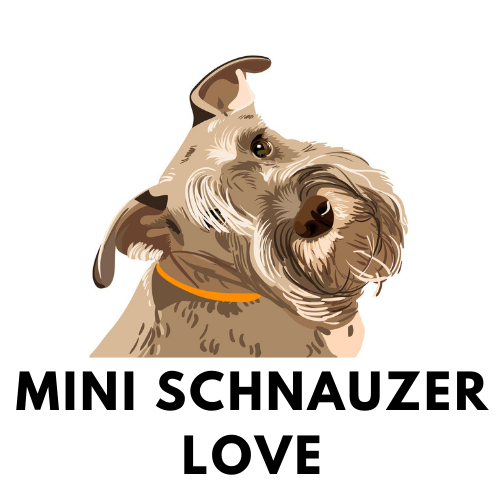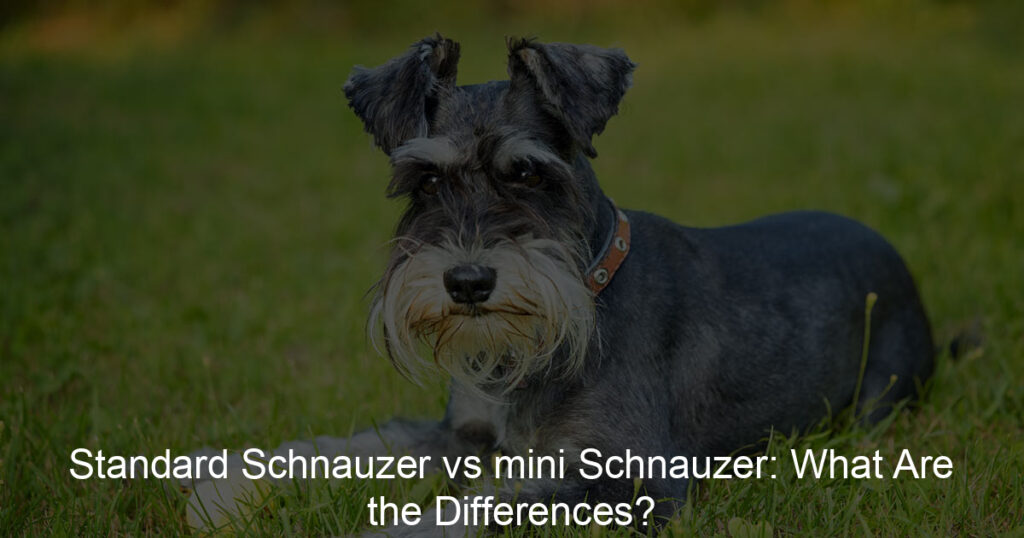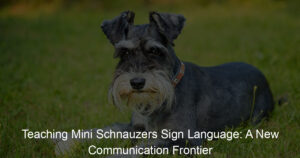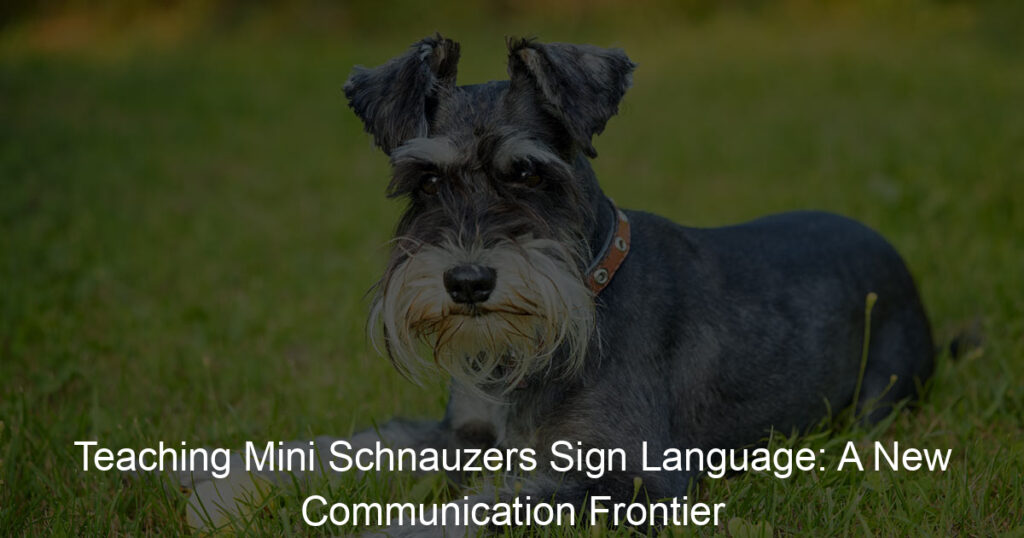We’ve all seen the charming schnauzer breed of dogs and wondered what makes them so special. Of course, their signature fuzzy beard and happy-go-lucky demeanor make them a pleasure to be around, but did you know that there are actually two types of schnauzers—the standard schnauzer and the mini schnauzer?
Their differences may not appear at first glance, but these two breeds have distinct characteristics that set them apart from one another in terms of their size, activity level, grooming needs, and health risks.
In this blog post, we will compare and contrast Standard Schnauzers to Mini Schnauzers to help you decide which pooch is right for your family.
Temperament and Personality Traits: Standard Schnauzer vs Mini Schnauzer
The Standard Schnauzer is known for its protective nature, intelligence, and versatility. This breed is inherently energetic and excels in various roles such as watchdog, ratter, and even a children’s playmate. They are friendly with familiar people but tend to be aloof towards strangers. Their robust personality is balanced with a noble and affectionate side, particularly towards family members. On the other hand, the Miniature Schnauzer, despite its smaller size, is characterized by its fearless and energetic temperament. This breed is charming, intelligent, and highly trainable, but they are also known for their stubborn streak. Miniature Schnauzers can be great alert dogs, often barking to notify their owners of any strange happenings.
Exercise and Training Needs: Comparing the Standard and Mini Schnauzer
Both the Standard and Mini Schnauzers are active breeds that require regular exercise to keep them healthy and happy. The Standard Schnauzer, being larger, requires more physical activity and mental stimulation. They enjoy activities like brisk walks, play sessions, and even agility training. Early socialization and obedience training are also essential for this breed to prevent them from becoming overly protective or aggressive. The Mini Schnauzer, on the other hand, requires a moderate amount of exercise. Short daily walks and some playtime in a fenced yard would be sufficient for this smaller breed. Despite their size, Mini Schnauzers are quick learners and respond well to training, especially when positive reinforcement techniques are used.
Grooming and Maintenance: What to Expect with Standard and Mini Schnauzers
Both Standard and Mini Schnauzers possess a dense wiry double coat, which is quite easy to maintain. They are considered a hypoallergenic breed, which makes them suitable for people with allergies. Regular brushing is required to keep their coat free from matting and tangling. The unique “Schnauzer cut,” which leaves the coat longer on their legs and underbody, requires professional grooming every few months. Their beard and eyebrows also need frequent combing to remove food and dirt. Besides coat care, both breeds require regular teeth brushing, ear cleaning, and nail trimming.
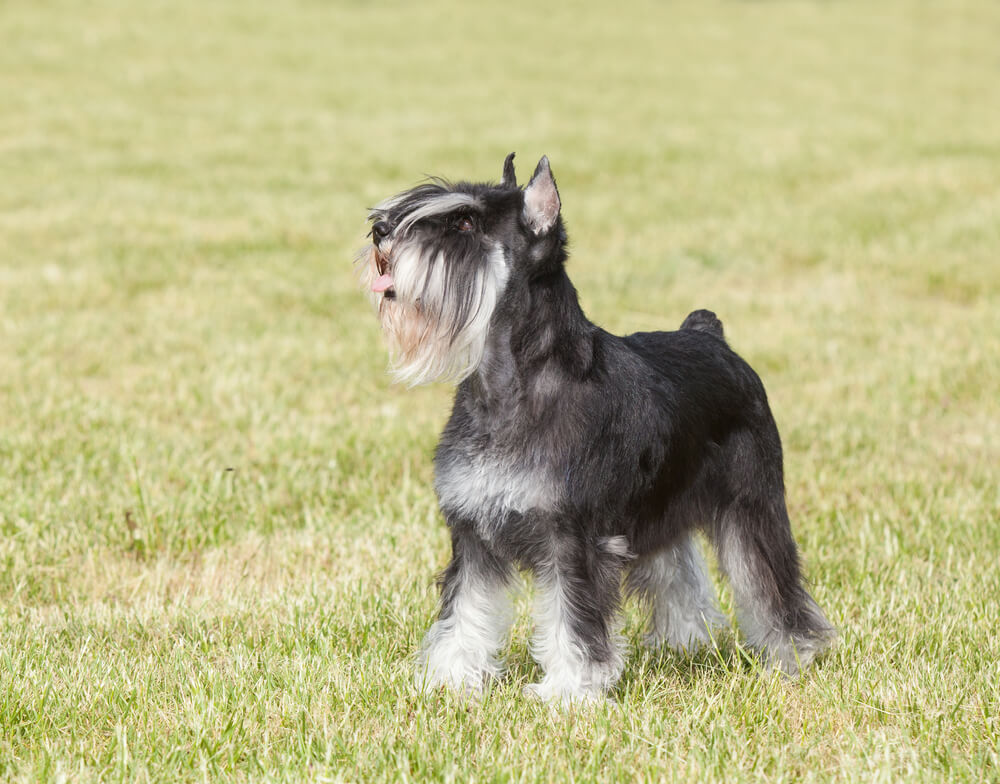
Health Concerns and Lifespan: Differences Between Standard and Mini Schnauzers
Standard Schnauzers generally live between 13 to 16 years, and Mini Schnauzers have a similar lifespan of 12 to 15 years. Both breeds are known for being generally healthy, but they are prone to certain breed-specific health issues. Standard Schnauzers may face potential health issues such as hip dysplasia, eye problems, and heart disease. Mini Schnauzers also share similar health concerns, but they are more prone to obesity and can suffer from pancreatitis, diabetes, and bladder stones. Regular vet check-ups and a balanced diet can go a long way in ensuring the health and longevity of both breeds.
Feeding Requirements: How Much Should Your Standard or Mini Schnauzer Eat?
A Standard Schnauzer will typically need between 1.5 to 2 cups of high-quality dry food daily, divided into two meals, while a Mini Schnauzer will require less, about 0.5 to 1 cup daily, also divided into two meals. Both breeds should be fed a diet that matches their age, size, and activity level. It’s important to monitor their weight and adjust food portions accordingly, especially for Mini Schnauzers who are more prone to obesity. Providing a balanced diet rich in protein, fats, and carbohydrates will help maintain their overall health.
Compatibility with Families and Other Pets: Standard Schnauzer vs Mini Schnauzer
Both Standard and Mini Schnauzers make excellent family pets. They are known for their loyalty and love towards their human family members. The Standard Schnauzer, due to its larger size and protective nature, can make an excellent guard dog for the family. They get along well with children, but as with any breed, play with younger children should be supervised. Similarly, Miniature Schnauzers are good with children and enjoy the excitement and play that comes with them. However, their smaller size might make them more vulnerable to injury from rough play, so supervision is necessary. Both breeds can get along well with other pets in the household, especially if they are socialized from a young age.
Choosing the Right Breed: Questions to Ask Before Getting a Standard or Mini Schnauzer
The decision between a Standard and Mini Schnauzer should be based on your lifestyle, living arrangements, and personal preference. Standard Schnauzers are larger and require more space and exercise, making them a better fit for families with a larger living area and an active lifestyle. If you’re seeking a smaller companion that requires less physical activity but still has a big personality, the Mini Schnauzer might be a better fit. Regardless of the breed, prospective owners should consider factors such as time for training and socialization, grooming needs, and potential health concerns. It’s also important to consider the lifespan of the breed and whether you’re prepared for a long-term commitment.
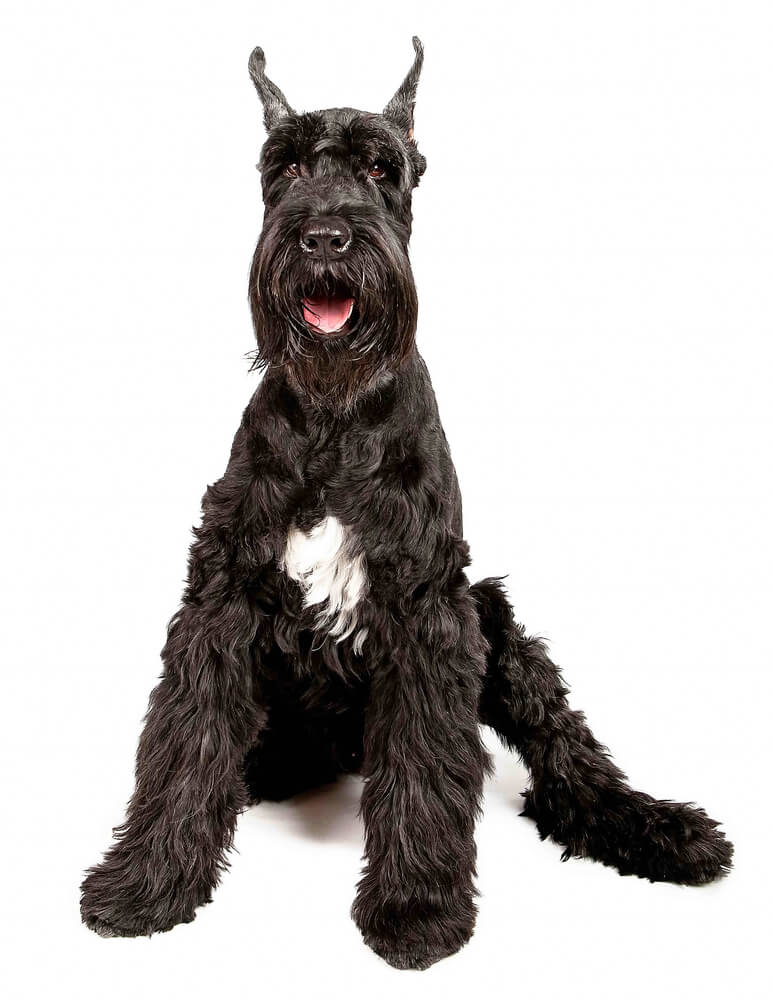
Breed History: The Origins of Standard and Mini Schnauzers
The Standard Schnauzer is the oldest of the three Schnauzer breeds and has a rich history dating back to the Middle Ages in Germany. They were primarily used as guard dogs, rat catchers, and herding dogs. The Mini Schnauzer, on the other hand, was bred down from their larger counterpart in the late 19th century, with the goal of creating a smaller companion dog that could also hunt vermin. Despite their different histories, both breeds share a distinctive look and are known for their wiry coats and bushy eyebrows and whiskers.
The Schnauzer’s Role in Working and Show: From Standard to Mini
Standard Schnauzers are known for their versatility and have been used in various roles throughout history, from herding livestock to serving in police work and search and rescue missions. They also excel in dog sports such as obedience, tracking, and agility trials. Mini Schnauzers, while not as commonly used in working roles due to their size, have made a name for themselves in the show ring. Their charismatic presence and distinctive grooming have made them popular show dogs. Despite their different roles, both breeds are highly trainable and enjoy tasks that challenge their minds.
Rescue Groups and Breeders: Where Can You Find Standard and Mini Schnauzers?
Whether you’re interested in a Standard or Mini Schnauzer, it’s important to do your research before bringing one home. Reputable breeders should be able to provide health clearances for both parent dogs and will welcome your visit to see the puppies and their living conditions. Alternatively, there are many rescue organizations that specialize in Schnauzer breeds and have dogs of all ages available for adoption. They may also provide post-adoption support and resources. Whether from a breeder or a rescue, a Schnauzer can make a wonderful addition to the right home.
How do I know if my schnauzer is miniature?
Schnauzers come in three standard sizes and the miniature is the smallest. A great way to determine if your schnauzer is miniature is to measure them against a breed chart. They should reach no more than 11-14 inches tall while weighing between 12 and 18 pounds.
Another telltale sign is the groomed beard and eyebrows of a miniature schnauzer, which stand out more due to their size. If you take your schnauzer on walks, you may find that other people recognize your pup as mini before you do! It’s always a good idea though to double-check with an experienced breeder that your schnauzer meets the size standards given for miniatures.
There are many great benefits to owning a miniature schnauzer so make sure you get an accurate size estimate!
What are the 3 types of Schnauzers?
The Schnauzer breed comes in three distinct sizes, all of them strong and sturdy. The largest is the Standard Schnauzer which stands at 18-20 inches and weighs 35-45 pounds. Their medium-sized siblings are Miniature Schnauzers that reach 12-14 inches and weigh 11-18 pounds.
Finally, the Toy Schnauzer variety is much tinier with adults measuring 8-12 inches and weighing only 5-8 pounds. Each type has a loyal and mischievous character but it’s the smallest one that is most prone to making trouble.
No matter which Schnauzer you bring into your home, though, they all make excellent family companions!
Here’s a table that summarizes the main differences between the Standard Schnauzer and the Miniature Schnauzer:
| Characteristics | Standard Schnauzer | Miniature Schnauzer |
|---|---|---|
| Average Height | 18-20 inches | 12-14 inches |
| Average Weight | 35-45 pounds | 12-18 pounds |
| Temperament | Protective, intelligent, energetic | Fearless, energetic, charming |
| Exercise Needs | High (Long walks, play sessions, agility training) | Moderate (Short daily walks, some playtime) |
| Grooming Needs | Regular brushing, professional grooming for Schnauzer cut | Regular brushing, professional grooming for Schnauzer cut |
| Health Concerns | Hip dysplasia, eye problems, heart disease | Obesity, pancreatitis, diabetes, bladder stones |
| Lifespan | 13-16 years | 12-15 years |
| Food Requirements | 1.5-2 cups of high-quality dry food daily | 0.5-1 cup of high-quality dry food daily |
| Compatibility | Good with families and other pets, best suited for larger living spaces | Good with families and other pets, suitable for smaller living spaces |
| Breed History | Oldest breed, used as guard and herding dogs | Bred down from Standard Schnauzer to hunt vermin and be a companion |
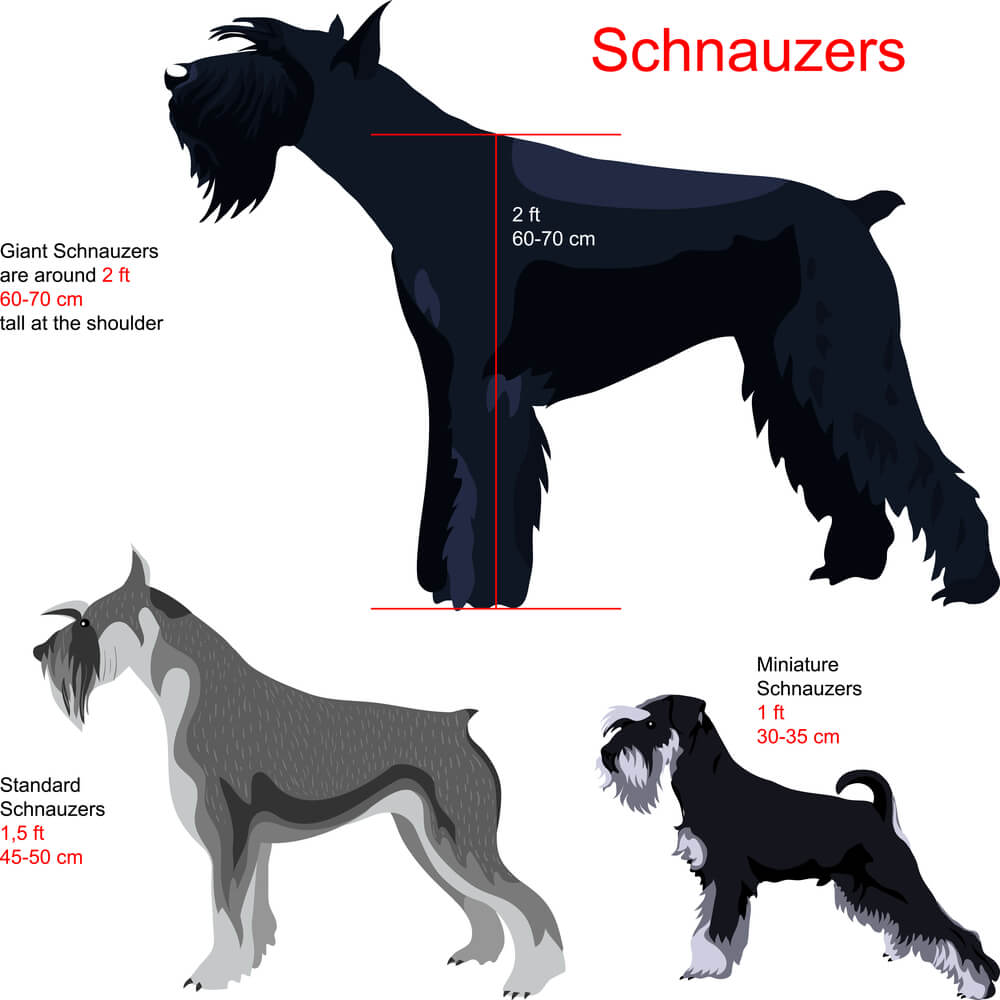
What is a standard mini schnauzer?
Miniature schnauzers are a unique and popular breed of dog, characterized by their strong-willed nature and distinguished wiry coats. Originating in Germany, these breeds are true terriers and thrive on exercise, playtime, and lots of human attention. Compactly built, these dogs range between 12-15 inches tall, with a typical weight of 12-20 pounds.
Named for their signature facial hair – resembling a mustache – mini schnauzers require weekly grooming to maintain their signature “distinguished” look. Loyal to their families, they also tend to be quite alert and quick to bark at unfamiliar sounds or movements. When trained from an early age, the mini schnauzer can make an excellent companion for just about any household.
Which is better miniature or Standard Schnauzer?
When it comes to Schnauzers, size matters, with big differences between the Miniature and Standard Schnauzer. Each provide their own unique personality traits so ultimately the choice of which one is better has no right or wrong answer.
Whereas the Miniature Schnauzer is often more independent and can be a bit high-strung at times, the larger Standard Schnauzer is known for its loyalty, protectiveness, and intelligence. Of course, socialization plays a major part in how these canines turn out; however, if you have an active lifestyle that involves lots of outdoor activities and physical exercise, you may want to consider the Standard Schnauzer due to its larger size and higher energy levels.
Either way, with routine care and proper training – both breeds make wonderful family pets.
What two breeds make a mini schnauzer?
The mini schnauzer is a beloved breed of terrier that has been around in the United States since the 1920s. It’s a cross between two important breeds: the Standard Schnauzer, which was bred to guard sheep and cattle, and the Poodle, which originally came from Germany as a water retriever.
Together, these two make a wonderful companion dog that is lively and devoted, but still obedient and loyal. The mini schnauzer is known for its long nose and longer leg than other similar-sized breeds such as the Yorkshire terrier and Maltese.
Today it remains one of America’s most popular breeds, much beloved by its owners for its size and athleticism.
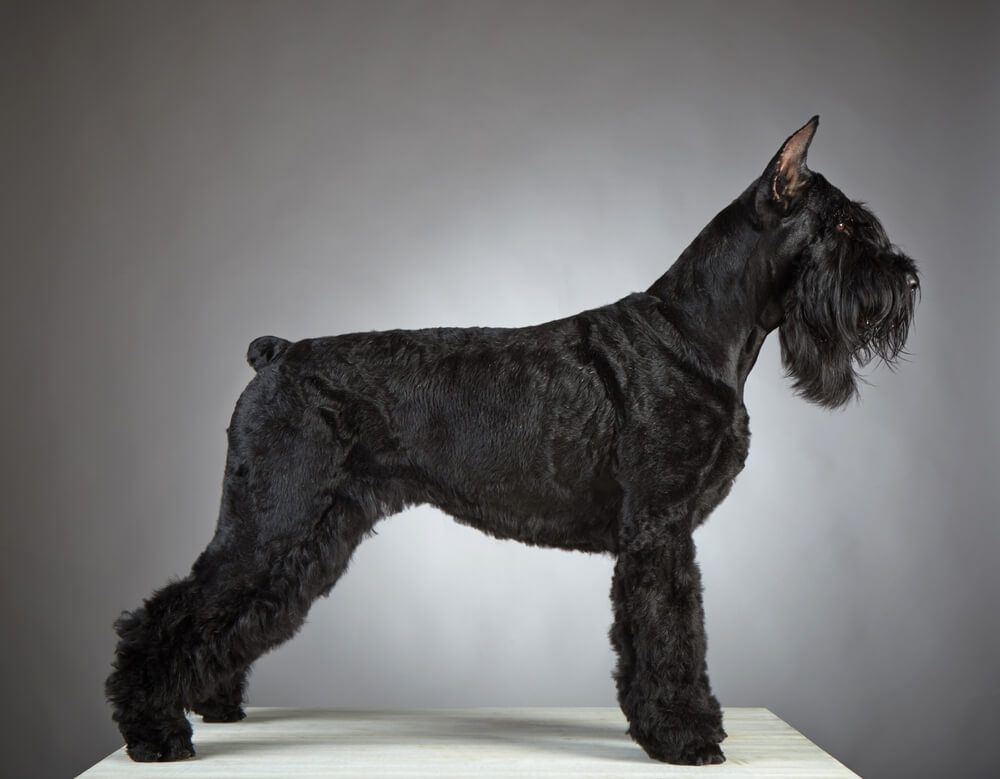
Summary
Ultimately, the differences between standard Schnauzers and mini Schnauzers are quite clear. The standard is larger and calmer than the mini, which is often considered more active and vocal. The mini does require more grooming than the standard because of its wiry hairs, but it’s worth it to keep them in good condition.
Ultimately, there isn’t a right or wrong answer when choosing which type of Schnauzer to own; it’s all based on personal preference. If you’re looking for an alert and active companion that loves to explore, then the mini may be perfect for you. If a calmer demeanor and larger size appeal to your sensibilities, then the standard is sure to please.
Whichever breed you choose, rest assured that both Schnauzers make great pets!
